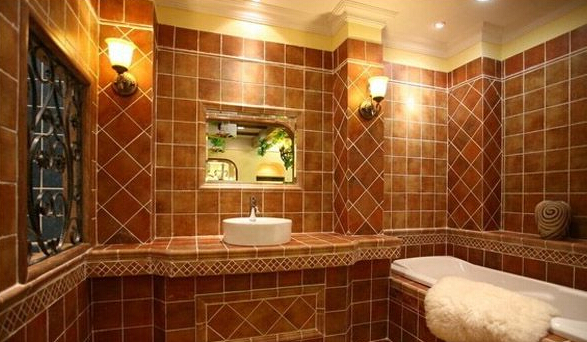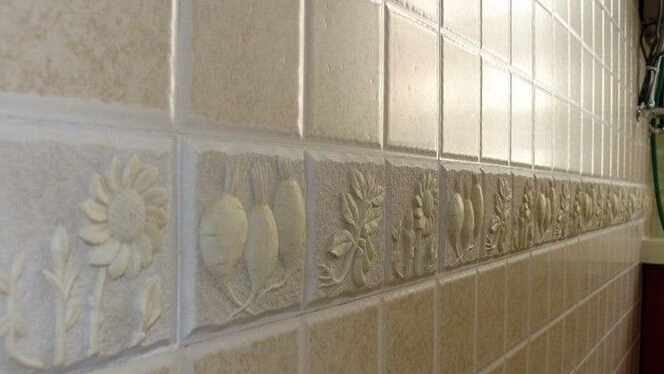Tiles must be purchased before paving the tiles, but how many suitable tiles to buy, what kind of tiles to buy better? The following will introduce how to calculate the tile area, how many suitable tiles to buy, I hope to be helpful to you.

First, calculate the tile number by area
The total number of tiles = tiles tile area (square meters) &spanide; (the length of a single tile × the width of a single tile)
Such as: 20 square meters of 120 × 120mm specifications of a total of how many tiles to buy?
Total number = 20m2&spanide; (0.12m x 0.12m) = 1388.9 (pieces)
Note: When calculating the number of pieces, it should be noted that the units are uniform, so the length and width of the tiles should be converted from millimeters (mm) to meters (m).
If the result of the calculation is a decimal, the decimal point is generally calculated using the “round up†method, ie, 1389 pieces, and another loss is required to purchase the tile.

alert! Profiteering algorithm is tricky! Sneak away your money secretly!
Netizen: “Yesterday I bought a white bread brick with a specification of 120mm*120mm in the store. When I opened the bill, I used squared pricing, 120 square meters, and I didn't ask how many square meters I was. Today, the tiles were delivered, and we bought 20 square meters. They counted us 65 sheets per square meter, a total of 1300. At that time, there were doubts... The delivery master said that because of this small brick, there was a seam to be left..." That is, there should be at least 1,380 tiles. As a result, merchants only sent 1,300 pieces, which was a total of more than 80 pieces. After complaints were tossed, a total of 1,340 tiles were eventually delivered by merchants.
Compared with the following calculation methods, the rough look is basically the same, and the intentions will be found in the heart:
Algorithm 1: The number of bricks per square contains × squares = [1&spanide; (0.12m * 0.12m) × (factor)] × 20 = ≈ × 67 × 20 = 1340 [this algorithm is easy to play tricky]
Algorithm 2: tile paving area (square meters) & spanide; (length of single tile × single tile width) = 1389 pieces [reasonable algorithm]
Mystery: The square number is correct, the number of pieces is less! Pay per square, but the number of bricks per square is rounded (some merchants will also get a conversion factor, or as the above-mentioned merchants make a joint, claiming that the internal regulations play tricks), the total number of tiles is unknowingly reduced Now. Although 1 level is not felt, the number of squares purchased is a lot, and it is a big loss for consumers.
Conclusion: When estimating the price, you can estimate it in square meters, but to buy a tile, be sure to confirm the number of pieces with the merchant. This will prevent the merchant from playing tricks on the algorithm and unwittingly take away your money.

Second, according to the length of the number of waist line
First, ask the tiling worker to measure the total length of the waist line to be attached. The calculation method is:
Total number = total length of the waist &spanide; length of single waist line
For example, the length of the waistline is 10 meters, and the size of the selected waistline is 80mm*3mm brick.
Total number = 10m&spanide; 33m = 30.3 pieces
The decimal point is generally calculated using the upward rounding method, so the result is 31, buy 1-2 more.
So how much waistline to buy?
The perimeter of the wall = the ground area number *4; the actual number of waistlines purchased = the perimeter of the wall and the length of the waistline.
Such as: 5 root number * 4 The length of the waist line (0.3m) = 30.

In the purchase of the waist line is generally taken by the film or strip calculations, if there are decimals, the general use of a rounding way. Also note that adding one to each bend means that it is best to add one more waistline at the corner of each wall, because the tile waistline to be attached to each wall will not be an integral piece. Did the owner say that the half-waist line that was cut off from this wall was not a position that could be put to the other wall? This is true, but it may not be practical in practice because the waist line is patterned and needs to be considered. The effect of the parquet. The shape of the waist line is thin and long, so it is easily damaged during transportation and construction. It is necessary to leave one waist line for each wall. Otherwise, one waist line will be used to make up for the difference. Another point is that when calculating how many tiles are to be used, the position can be saved behind the fixed furniture and facilities. If there is a cabinet behind the cabinet, there is no need to attach a waistline, but the kitchen refrigerator should be affixed to the back.
Edit reminder: Attention! First, after calculating the actual area, pay attention to the number of tiles sold rather than the area; second, plus a certain amount of loss, the general loss of 5-10%, small bricks in the 3% . Otherwise, the time spent on filling the bricks will be delayed and the batch inconsistency will have a chromatic aberration effect.
Tile Buying Formula Tile Tile Price Tile Specification Kitchen Tile ld Tile